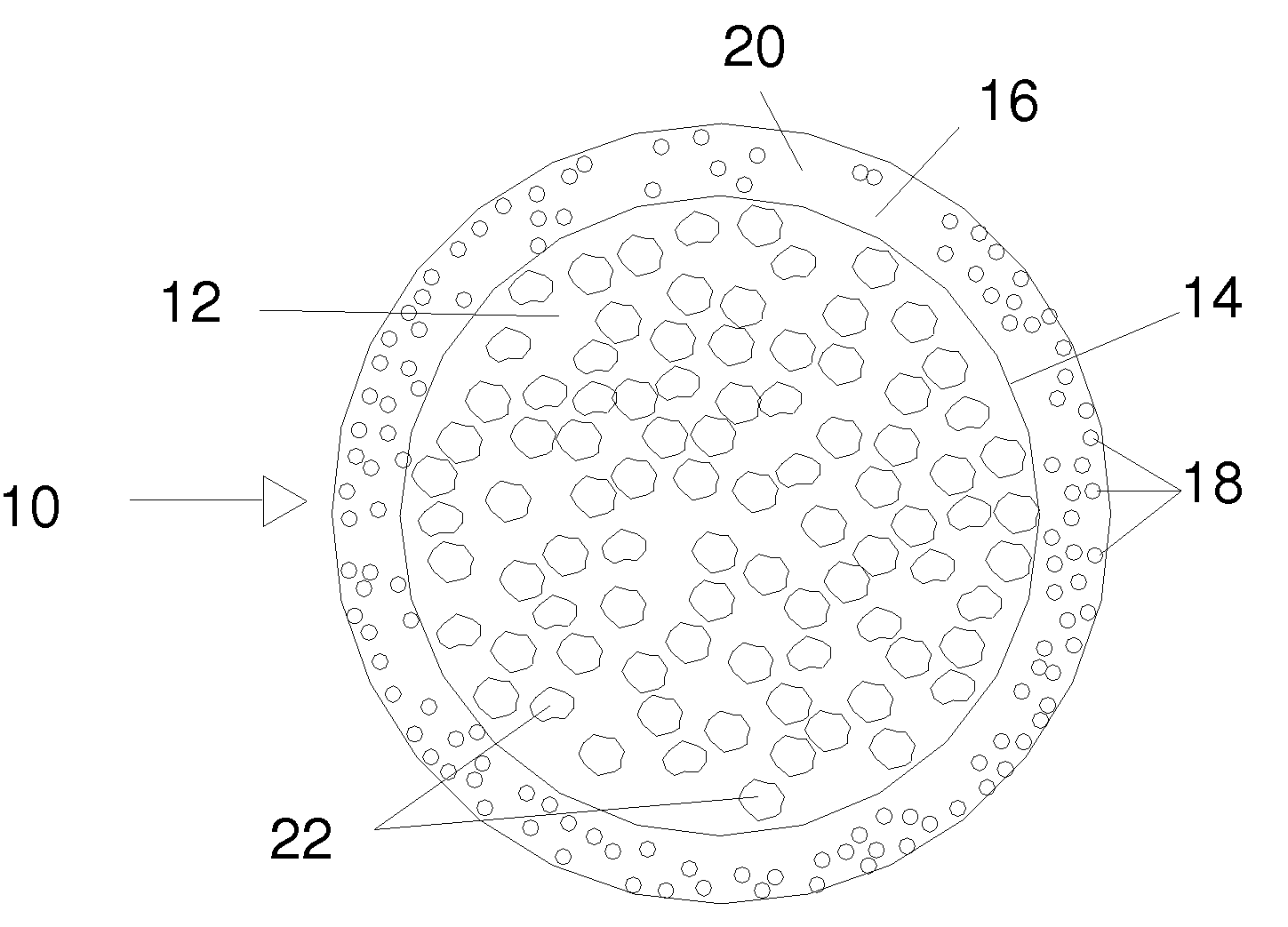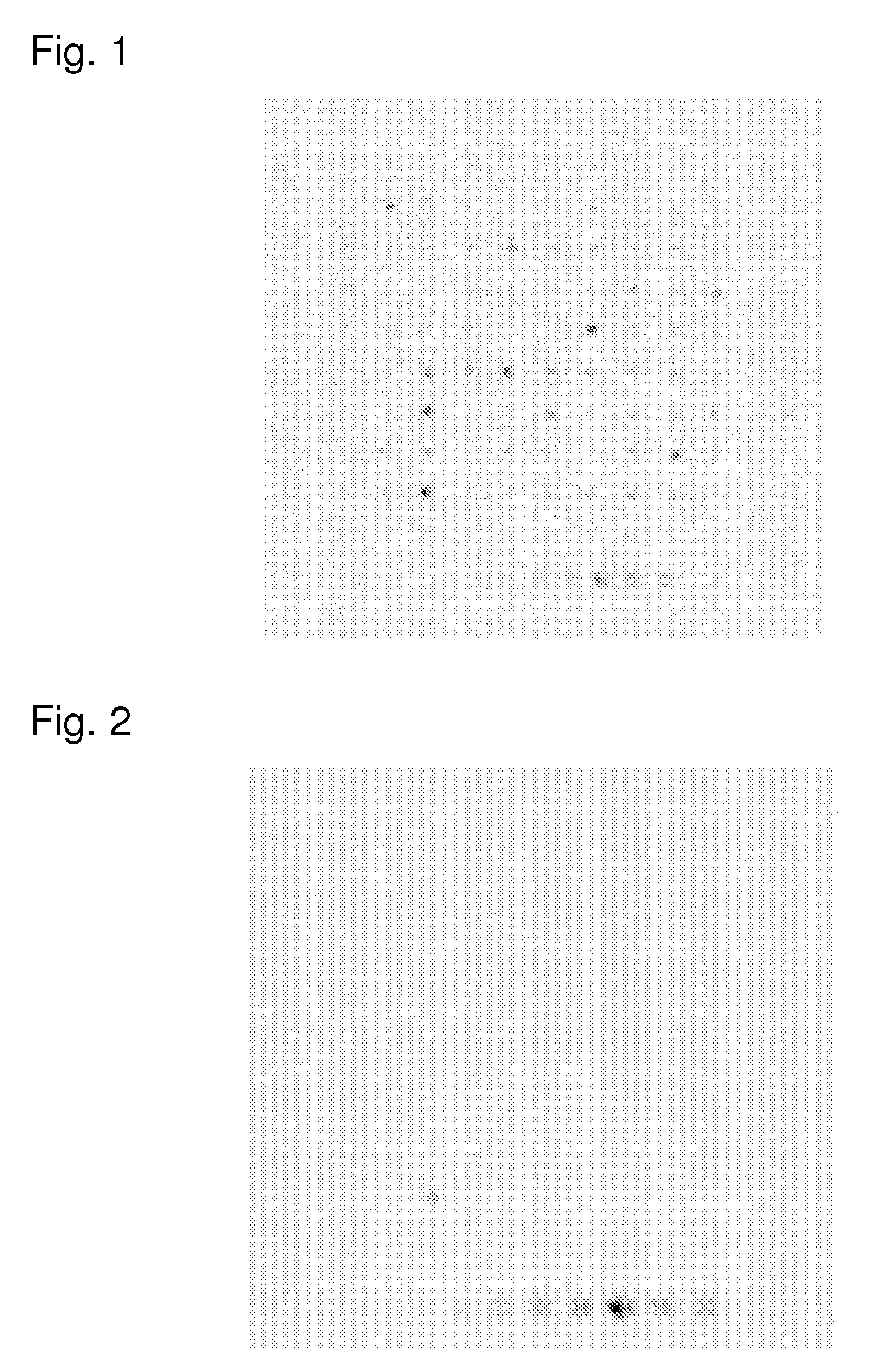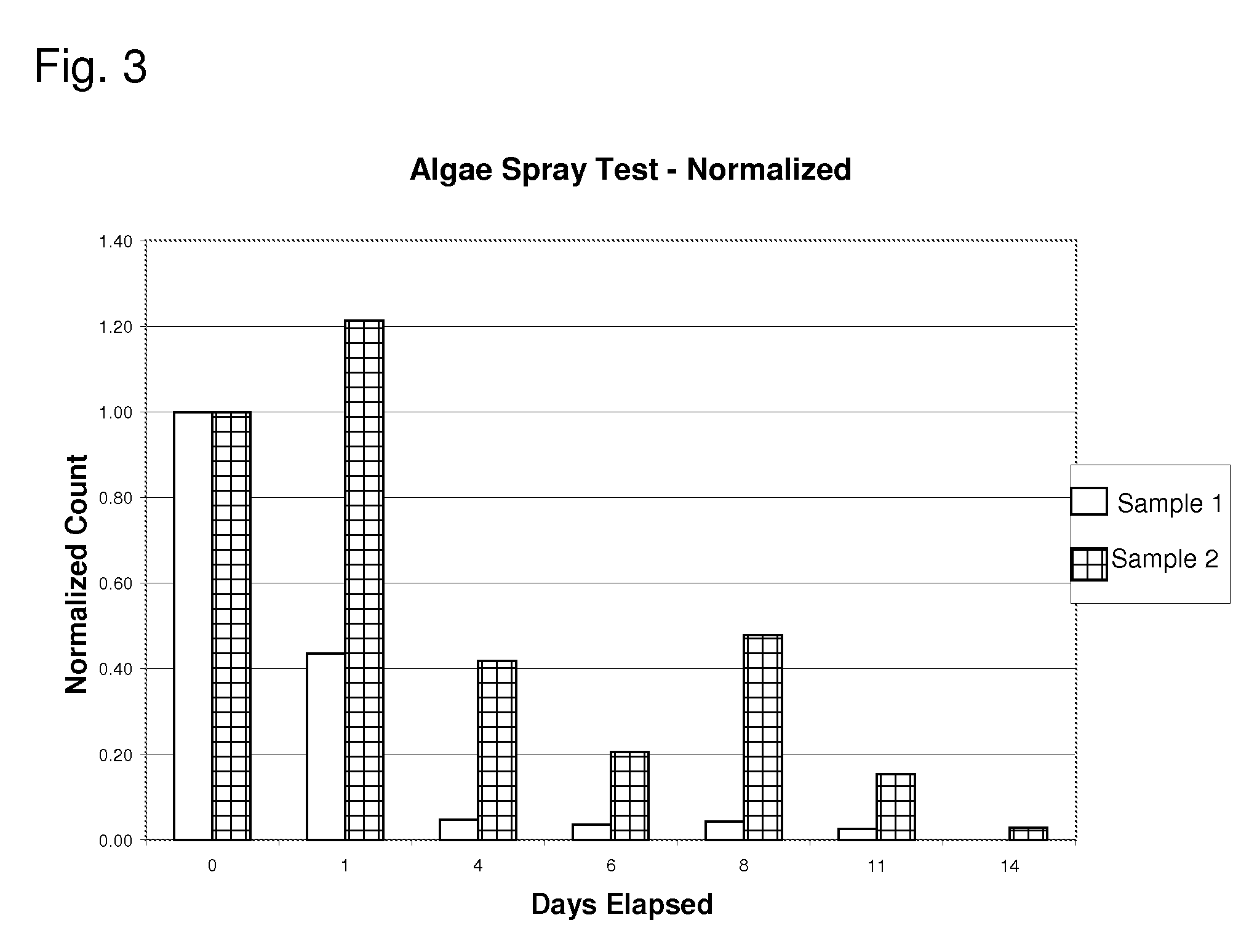Roofing granules with high solar reflectance, roofing materials with high solar reflectance, and the process of making the same
a technology of solar reflectance and roofing materials, applied in the field of roofing granules and roofing products, can solve the problems of high reflective synthetic particles, low solar heat reflectance of colored roofing granules themselves, and inability to meet the needs of roofing granules,
- Summary
- Abstract
- Description
- Claims
- Application Information
AI Technical Summary
Benefits of technology
Problems solved by technology
Method used
Image
Examples
example 1
[0117]The base particles of Comparative Example 1 were coated by a coating containing nano zinc oxide and titanium dioxide as a UV blocker to render them UV opaque. This was achieved by coating 500 g of the core particles with a coating consisting of 32.40 g sodium silicate (grade 42 from Oxychem Corp., Dallas, Tex.). 50.40 g of water, 7.20 g of kaolin clay (Unimin Corp. Hephzibah, Ga.), 10.80 g of zinc oxide (Kadox 920 from Zinc Corp of America), and 6.10 g of titanium dioxide (R101 from DuPont Corp., Wilmington, Del.). The coating was prepared by mixing the ingredients in a mixer at 300 rpm until a uniform mixture and the base particles were then coated by the coating by using a fluidized bed coater (model 0002 from Fluid Air Inc., Aurora, Ill.). The resultant particles have a color reading of L*=76.34, a*=1.11, b*=5.18, and a solar reflectance of 57.1%. The UV opacity test shows that the resultant particles have much higher UV opacity at >98% as determined by the same test method...
example 2
[0119]600 grams of grey roofing granules can be prepared by coating ceramic grog 90A (a UV transparent mineral material) supplied by Maryland Refractories with a grey coating composition composed of 125 g. sodium silicate, 21.77 grams IR transparent and IR opaque pigments, which are as follows: 4.85 grams Sheppard 411 Black, 8.64 grams Ferro RD-1563, 0.60 grams Ferro Acid Resistant Ultramarine Blue, 4.68 grams DuPont R101 TiO2, 3.84 grams Ferro 10550 Brown, and 1.44 grams Ferro V-10411 Yellow, 18.50 grams zinc oxide (Kadox 920 from Zinc Corp of America), 9.55 grams Wilky clay (available from Wilkinson Kaolin Associates, Ltd., Gordon, Ga.), and 45 grams water. The coating can be deposited on the mineral particles using a Wurster fluidized bed coater. The grey coated granules can then be cured in a rotary dryer at 565° C. (1050° F.). Due to the opaque nature of the coating, the coated UV transparent ceramic grog mineral particle would become granules opaque to UV. Further, due to the ...
PUM
| Property | Measurement | Unit |
|---|---|---|
| Fraction | aaaaa | aaaaa |
| Fraction | aaaaa | aaaaa |
| Fraction | aaaaa | aaaaa |
Abstract
Description
Claims
Application Information
 Login to View More
Login to View More - R&D
- Intellectual Property
- Life Sciences
- Materials
- Tech Scout
- Unparalleled Data Quality
- Higher Quality Content
- 60% Fewer Hallucinations
Browse by: Latest US Patents, China's latest patents, Technical Efficacy Thesaurus, Application Domain, Technology Topic, Popular Technical Reports.
© 2025 PatSnap. All rights reserved.Legal|Privacy policy|Modern Slavery Act Transparency Statement|Sitemap|About US| Contact US: help@patsnap.com



